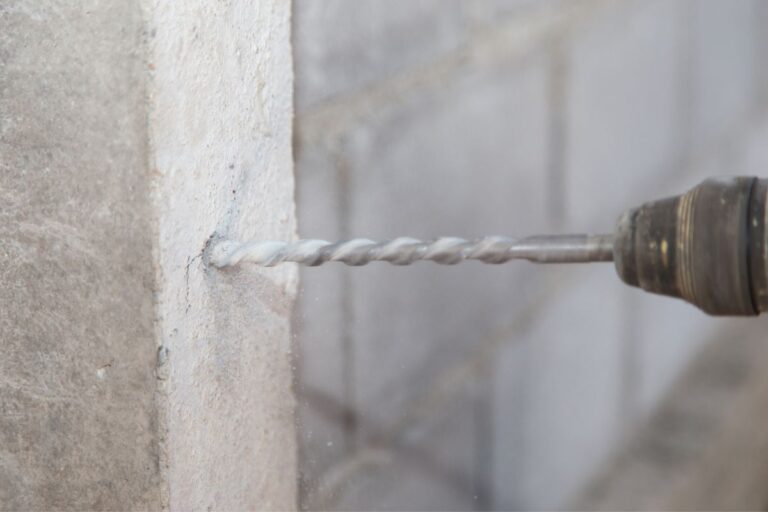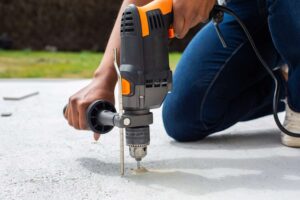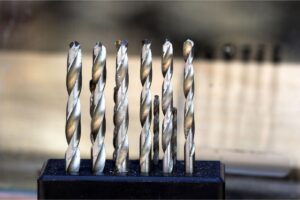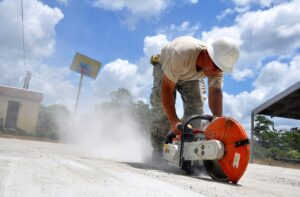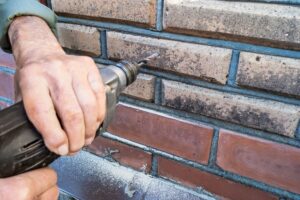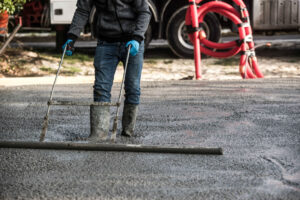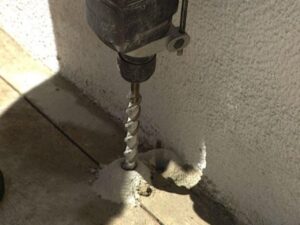While concrete is used as a reliable and sturdy material for a whole range of different heavy-duty DIY projects, it is unfortunately quite hard to actually use in projects at times because of how dense and hard it is, making drilling holes through it a lot more difficult than with wood or other common materials.
While it can be difficult, drilling through concrete can be made a lot easier if you know the correct method and have the right equipment and tools at your disposal, and since concrete is so widely used in so many DIY projects, it’s always worth learning the easiest and most effective way of cutting through it with a drill.
Table of Contents
What type of drill is best for drilling concrete?
The two main drills people will use when cutting through concrete is either a rotary or a hammer drill, however, while both follow a similar method, rotary drills will take longer than their hammer counterparts because of the way they are designed, and will also require a bit more physical effort to use accurately.
Hammer drills are therefore usually the much better option because it hammers while it rotates which helps to break down the concrete to form a nice and clean hole that will be made much quicker in comparison.
What drill bits should I use for drilling concrete?
Alongside choosing the correct drill, because concrete is so demanding and will require a significant amount of pressure to cut through, it’s just as important that you also choose the right drill bits that are designed for cutting through durable materials.
Any drill bits that use carbide or tungsten carbide will work well for drilling through concrete since they are specifically designed to be able to cut through any stone along with more challenging materials such as metal and even steel.
Masonry drill bits in general which are designed for harder materials such as block and stone will work perfectly when cutting through concrete and will be able to handle the process without bending or snapping.
How to drill into concrete
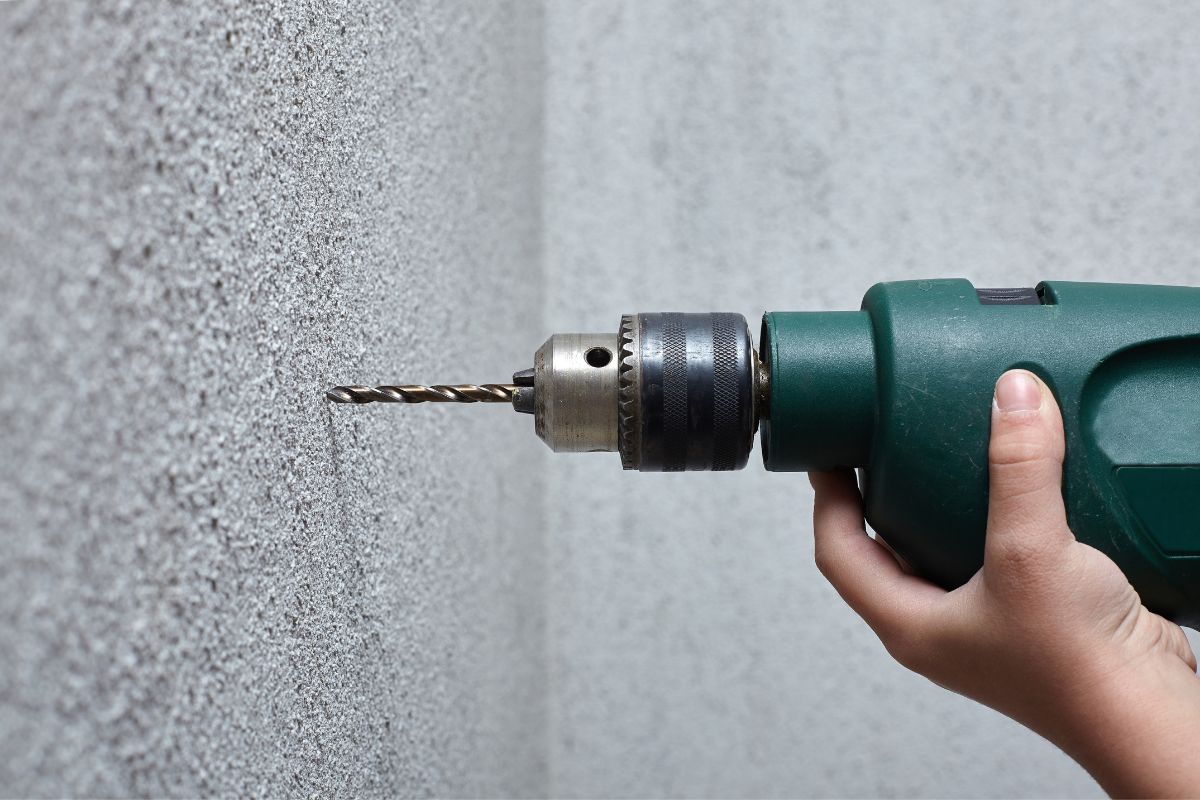
When you have either a hammer or rotary drill at hand, you can start drilling as long as you have a few gloves and goggles to keep you protected during the process.
It is also advised to cover your ears with hearing equipment or headphones if you can since the drill will inevitably get quite loud.
While cordless drills will grant you more maneuverability while you drill, corded variants will also work just fine. Having a hammer nearby will also make your job a lot easier since this can help to create a much smoother and more precise hole.
Step 1: Prepare a drilling point
Once you have your equipment ready, you will need to know exactly where you want to drill your hole and adjust the depth stop of your drill to how much you intend to drill into the concrete to make sure it comes out as deep as you would like.
Once you know where you want the hole to be, it can be worth lightly tapping it several times with your hammer so that you create a small but noticeable indent.
This slight bit of damage will not only give you a clear indication as to where the hole is going to be, but it also makes it far easier for the drill to puncture the otherwise hard and sturdy concrete surface.
Step 2: Attach your drill bit
Attach your masonry drill bit to your drill so that you can start drilling into the indent made earlier.
If you’re using a rotary drill, you can attach the drill bit by opening the chuck and then turning it counter-clockwise before attaching the bit and turning it back clockwise so that it’s tightened.
For hammer drills, some of them will also have this system, however many will also use a chuck-key system where you will need to manually open up the chuck jaws using the key to then insert the bit and lock the jaws up again.
Step 3: Hold your drill properly
Hold your drill as you would for other DIY projects with one hand holding it in place and your index finger on the ‘trigger’.
If you find this is too unstable or heavy for you to make an accurate hole, you can always try attaching a drill handle which will give you a little more assistance and precision.
Step 4: Start drilling slowly
Place your drill onto the indented marker and start drilling into the concrete at a slow speed, or if you aren’t able to adjust the speed control on your drill, you can instead drill at shorter speeds.
As the drill starts getting deeper, apply slightly more pressure and turn on the hammer function if you’re using a hammer drill to weaken the concrete slightly.
Start increasing the drill speed and apply just enough pressure so that the drill is staying in place easily without you needing to apply too much force.
It’s crucial not to go overboard with the pressure at this stage since because concrete is not a homogenous material, which means your drill bit can easily skate or even break entirely if you’re pushing it too far down.
Step 5: Take regular breaks
Drilling through concrete often takes a decent amount of time even if you’re just drilling a 2-inch deep hole, which is why it’s important to take regular breaks so you don’t tire yourself out.
Doing this every 20 seconds or so also allows the drill to cool off and pulls any excess dust out of the hole, making for a much cleaner overall cut.
Once your hole is drilled, flush out any extra dust with compressed air and your concrete will be ready to use.
Summary
Concrete is one of the most challenging materials to drill through, however once you know the proper technique and the right equipment to do it, it becomes a lot easier especially after you practice it numerous times.
Jake is a tool guy – think Tim Allen from Home Improvement but with a much drier sense of humor. He lives in the great state of Ohio and plays the guitar on his downtime. He also spends his time writing on all things tools and DIY-related as this is his passion.

